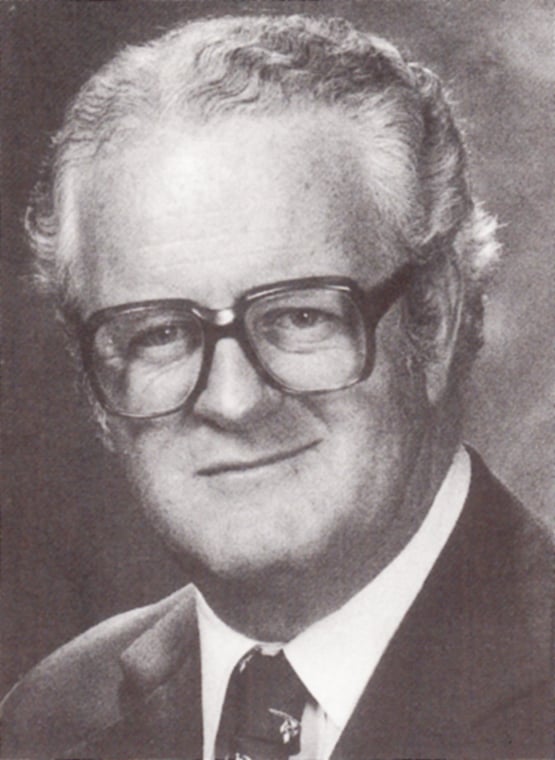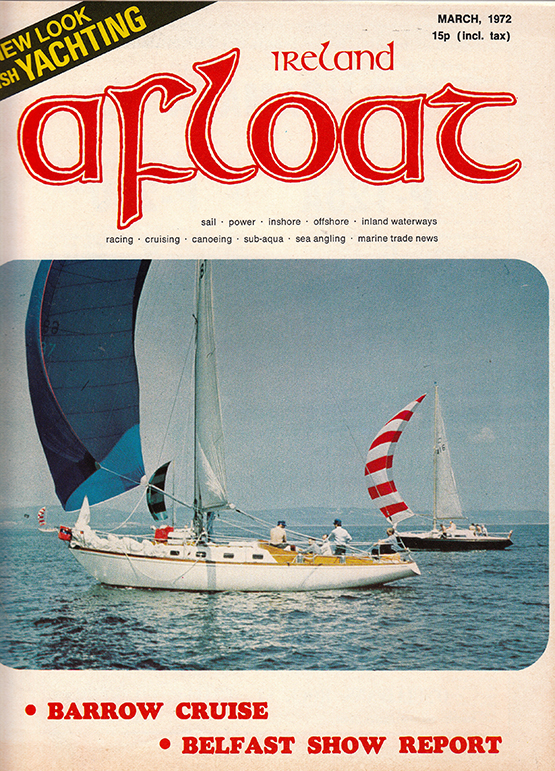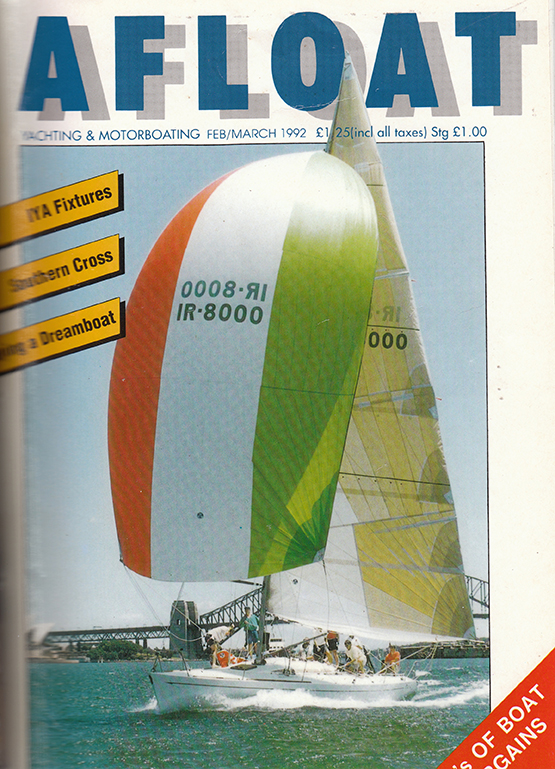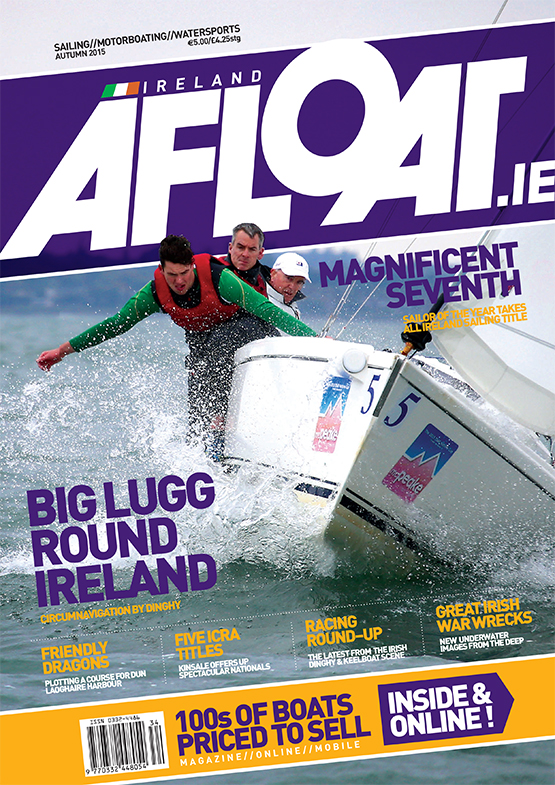The Afloat.ie website, which is ranked by Google as Ireland’s leading source for the provision of a broad range of recreational and commercial maritime information, news and comment, has been completely updated in recent weeks. Yet though it has acquired a fresh, fast-moving look, and now provides a new and unrivalled multi-platform service, the change has been effected without any interruption to service. That said, our alert and more tech-savvy readers have been welcoming each addition to our service as it comes online. The new-style Afloat.ie is both a ground-breaking development for maritime communications and news exchange and analysis in Ireland, and yet it is also a healthy continuation of an integral part of our maritime life which stretches back more than fifty years. W M Nixon takes up the tale, and looks forward to where this remarkable story might lead us all.
In the early 1960s the Irish Dinghy Racing Association (founded 1946) was in the process of being re-born as the Irish Yachting Association. A competitive three-boat Irish campaign had been mounted for the 1960 Rome Olympics with the sailing events in Naples, and the confidence gained from this project gave the nascent national authority new energy and clearer direction.
The proposed wider remit for the new IYA aimed to make the Association of interest to all sailing and boating enthusiasts, and a sub-committee - drawn from all the main sailing centres through the yacht and sailing clubs which were the core of the national authority - was set up to explore ways of establishing an Irish sailing and boating magazine to reach the small but growing home market.
The intention was that the IYA should publish the magazine itself, as it was not initially a valid stand-alone commercial proposition. The first Irish Yachting was the July/August edition of 1962, and it continued as a bi-monthly publication through the 1960s, relying for content largely on modestly-paid contributors – both specialist and regional - and the editorial and production work co-ordinated by IYA Secretary Ursula Maguire, with the Association underwriting the cost of a magazine whose income was augmented by advertising.

Clayton Love Jnr of Cork. Working closely with the late Jimmy Mooney of Dun Laoghaire, as President of the Irish Dinghy Racing Association he transformed it into the Irish Yachting Association, and together they co-ordinated the introduction of Irish Yachting magazine in 1962. In 1968 he was one of the small committee which oversaw the conversion of Erskine & Molly Childers’ famous Asgard to become Ireland’s first sail training vessel, and at the same time he was negotiating the amalgamation of the Royal Munster Yacht Club with the Royal Cork Yacht Club to have the Royal Cork YC thriving for its Quarter Millennium Celebration in1969-1970. A noted IDRA 14 and Int. 505 sailor, he won the Helsmans Championship, and in this photo, he is wearing the original IYA tie.
The hope had always been that the interest in sailing and boating in Ireland, with a developing marine industry to support it, would increase to such an extent that the magazine would become of interest to a commercial publisher, as it was felt that an in-house publication from a National Authority lacked the bite and broader interest to compete properly with the British yachting magazines which circulated widely in Ireland north and south.
In 1970 this aim was achieved, with the rights taken over by a commercial periodical publishing group which agreed that Irish Yachting & Motorboating – as it soon became – would be a monthly magazine which would guarantee space for specifically IYA news and policies, yet would equally expect to publish contrary views and incisive analyses.
Historic highlight. David Wilkins and Jamie Wilkinson win the Silver medal for Ireland in the Flying Dutchman Class at the 1980 Olympics

New look Irish Yachting: Afloat's first edition in 1972. Today's magazine and website covers the same Irish maritime topics as it did 43 years ago
At the same time it would make added efforts to reach potential newcomers in every area of boating, and general readers in all other areas of maritime interest. As a result of this, the magazine’s name was then changed to Afloat, and through the 1980s and the 1990s, with occasional changes of publishers, the magazine played a central role in the development and growth of Irish sailing and boating.

Going global. The Feb/March 1992 edition of Afloat celebrated Ireland’s win in both the December 1991 Southern Cross series, and the overall win in the Sydney-Hobart race 1991, with John Storey’s all-conquering Atara as our cover girl...
Since then, as our regular readers will be aware, over the past 20 years Afloat has been on a firm commercial footing and has developed into the comprehensive publication and Internet forum it is today. It continued to be so through the difficult times of recession, and through radical changes both in the Irish marine industry – the main supporters of the published version of Afloat Magazine – and the ways in which those marine manufacturers and traders reach their potential markets.

Another big international win, this time in the 21st century. Ger O’Rourke’s Cookson 50 Chieftain from Kilrush in the early stages of the Rolex Fastnet Race 2007, which she won overall. The Limerick skipper deservedly became Afloat.ie “Sailor of the Year” on the strength of this great achievement. Photo: James Boyd
Consolidation of the global marine industry, combined with the fact that Ireland is now within a very few hours flying time from the main centres of marine manufacturing, have meant that Ireland has become, in effect, a province of the European boat business.
Equally, the growth of the Internet has been such that international marine corporations have been able to develop websites of such quality that they by-pass established means of reaching potential customers. In the final analysis, these website constitute advertising. But they have now reached such a standard of sophistication that the uninformed reader sometimes has difficulty in differentiating a subtle sales pitch from genuine news and comment.
This re-direction of marketing budgets has inevitably impinged on established methods of communication and public conversation in the maritime sphere as elsewhere. But open media outlets such as Afloat.ie have in turn been re-inventing themselves in order to continue to provide their best possible service in an increasingly challenging environment.
In fact, Afloat magazine was one of the first to embrace new technology in the Internet age, with our initial website launched in 1993 with support from Allianz Insurance as Founding Sponsor. Now, some 53 years after Afloat first published on paper, it is the leader in Irish maritime communications online, while at the same time continuing to publish a quarterly version of the magazine on paper, with the Afloat Autumn 2015 edition hitting the news-stands next week.

Quarterly form – the up-coming Autumn 2015 Afloat, on sale next week
Today's scenario on the Internet is such that:
Afloat.ie's popular online format has a strong returning readership with around 48% of daily visits being return visitors. In fact over the peak sailing months in 2014 Afloat surpassed its own records for unique (direct) visitors with an average of 52,024 visitors a month, and as this graph shows, our key figures in 2015 are up 12%, with a significant further underlying rise towards the latter part of the season, though nothing quite matches the spike when Musandam Oman was establishing a new Round Ireland Record back in the Spring.

Afloat.ie's improving performance through 2015, with a spike for the successful Round Ireland record bid by Musandam Oman
The team works hard to achieve top Google Search rankings, and together with a tightly bound community of readers, Afloat.ie's continually up-dated combination of opinion, hard news and features puts it at the very heart of the national conversation on sailing, boating and maritime affairs.
It's a satisfying result to date because the aim has always been to provide Irish sailing clubs, classes and the wider maritime community with comprehensive and reliable information in a dynamic independent site to promote our sport to the wider audience which only the Internet provides.
This has been supported this year by the ISA with their renewal of a necessary relationship with Afloat.ie which in a sense marks a return to the situation in 1962. It’s probably a unique tie–up in world sailing, but is necessary because athough Ireland has all the status of a leading sailing nation, globally speaking we have a small national economy.
In addition, the internationalisation of the marine industry, and its increasing reliance on in-house digital communication for product publicity, means that the only significant income stream in Irish sailing and boating is through the clubs and the Sports Council grants which keep the ISA functioning.
The working agreement between the ISA and Afloat allows the association to use Afloat.ie’s sailing news feed and the use of Afloat's Sailor of the Year Award, and it is proving to be a successful link-up. It’s healthy in that Afloat.ie can provide a platform for much livelier discussions and topics than is the case with the ISA’s own website, which is obliged to be somewhat in the nature of a Government Gazette.
The Internet poses many problems, not least for traditional media, but in all my years as a sailing writer I have never seen the potential that exists for exciting Irish sailing communications as clearly as I do today with the current output from the Afloat website. It means that the spirit of the unique and lively Irish sailing and boating community is reflected by their means of communications with each other, and with the outside world.
The ISA has a valuable communications budget that needs to be spent very wisely to cover all areas of our sport, and to achieve this I would urge the ISA and Afloat to seek a stronger relationship. It would be a dynamic move which would help to provide additional communication services to sailing clubs throughout the country, while also reaching out to a wider market, and I am firmly of the opinion that it would fit well with the new direction that the reformed ISA is trying to take.

W M Nixon, seen here at last month’s Cruising Association of Ireland rally in Dublin, became Editor of Irish Yachting when it began commercial monthly publication in 1970. Photo: Aidan Coughlan































































